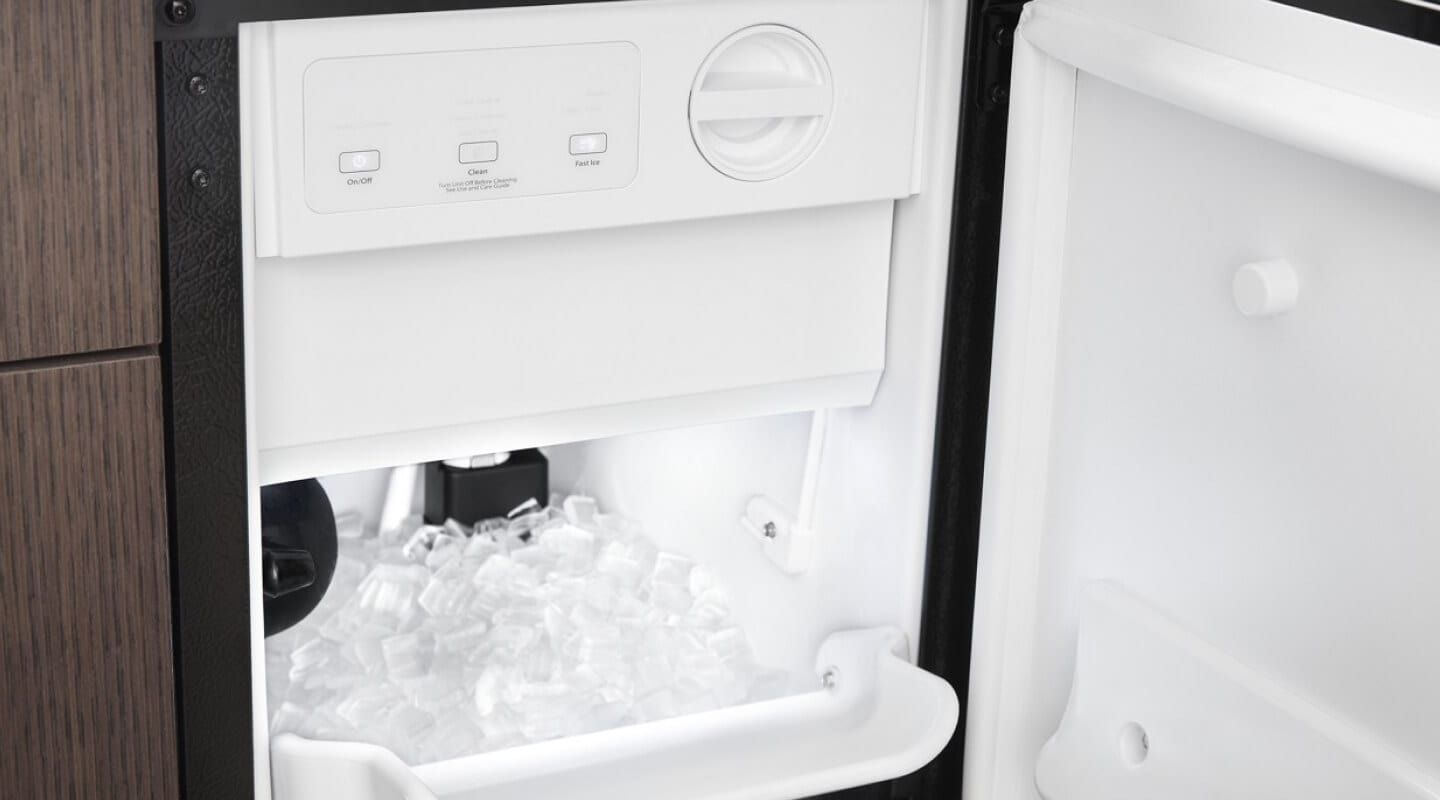
Ice maker troubleshooting: how to fix an ice maker
Gone are the days of manually filling and refilling ice trays, or so you thought. The frustration of an ice maker struggling to keep up, or failing altogether, can cause hiccups in your family’s daily routine. Walk through this ice maker troubleshooting guide to learn more about some of the most common causes of an ice maker on the fritz, and help find solutions that are often simple enough to tackle yourself.
What are some common ice maker problems and solutions?
Refrigerator ice maker problems can often be tied back to a handful of main components, including water valves and lines, the water filter, the ice maker control arm, compartment temperatures, the ice bin and more. Select a topic below to learn more about refrigerator ice maker troubleshooting, and check out our guide on how a fridge ice maker works.
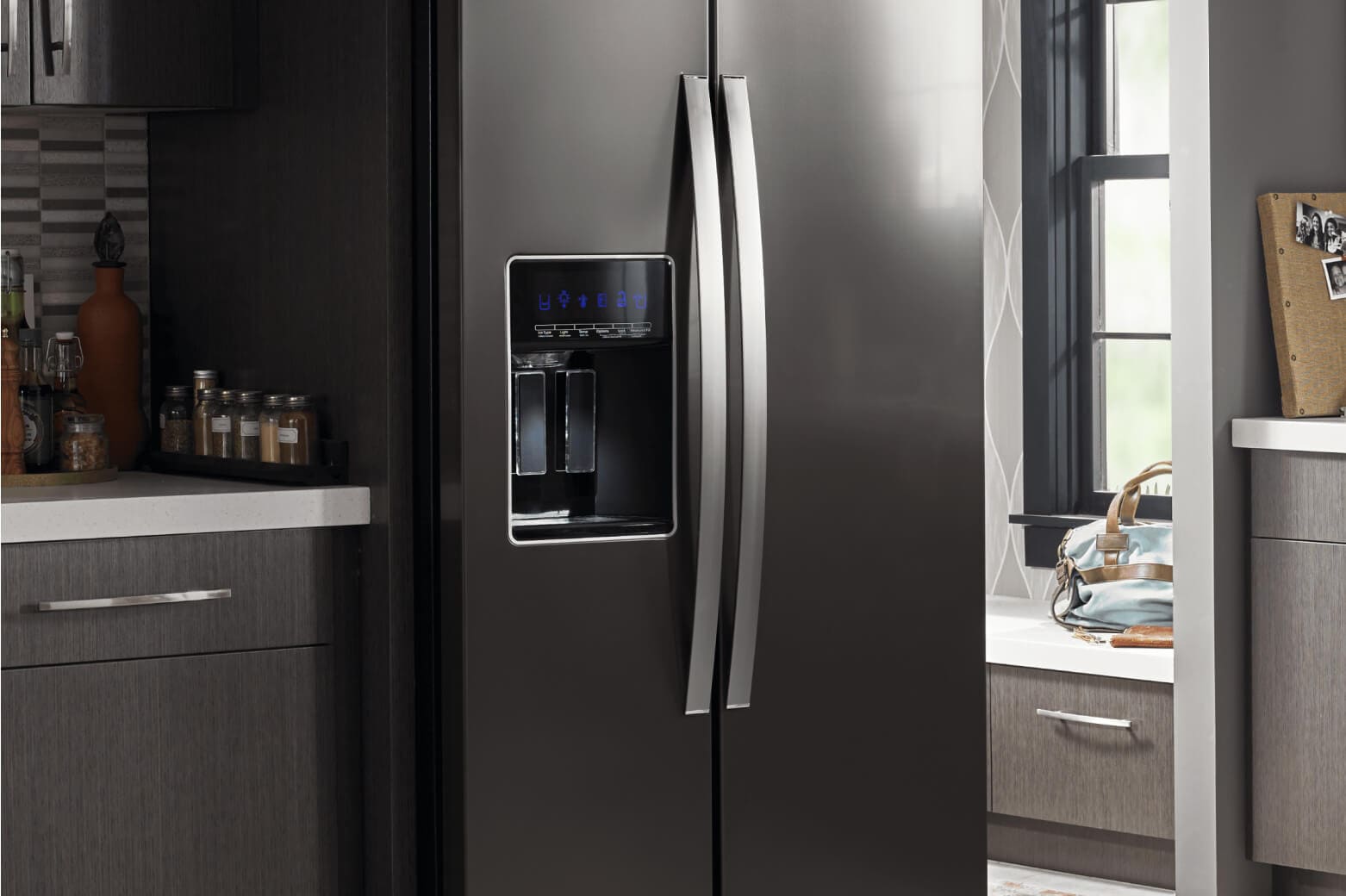

Ice maker is not working or not making enough ice
An ice maker that doesn’t produce can feel like nothing more than a waste of precious refrigerator or freezer space. Browse some of the common causes below that may help you pinpoint why your ice maker stopped working properly, or why your ice maker is not making enough ice, including simple solutions you can try yourself.
Clogged water filter
Cause: Your filter works hard to help reduce contaminants in your water, but can become clogged with particles it may trap over time. A clogged filter can send less water to the ice maker, which may cause a decrease or halt in ice production.
Solution: Be sure to change your refrigerator’s water filter once every six months, and be on the lookout for signs of an old filter. Some indicators may include odd tasting ice or water, slowly dispensed water, black specks in water or ice and, of course, limited to no ice production.
Defective water inlet valve
Cause: If your water filter is up-to-date, the water inlet valve for your ice maker might be the culprit. With the right amount of water pressure, the valve opens and closes to feed water through to the ice maker. A valve with pressure less than 20 psi (pound-force per square inch) won’t be strong enough to feed the right amount of water into the ice maker.
Solution: First, check the water pressure feeding the valve with your own equipment or the assistance of a professional. If the pressure is sufficient at 20 psi or higher, it means you may need to replace the water inlet valve.
Refrigerator or freezer compartment is too warm
Cause: Your ice maker may not be able to keep up with its intended rate of ice production when the refrigerator or freezer temperatures are set too high, resulting in slow ice production, cubes that are too small or no ice production at all.
Solution: Check the refrigerator temperature and freezer temperature, ensuring that the freezer is set to 0°F (-18°C), and the refrigerator temperature is somewhere in the range of 33–40°F (0–4°C).
Control arm mispositioned
Cause: On select models, the ice maker’s control arm is a large plastic or metal handle that rests on the side or top of the ice bin, and is responsible for gauging ice levels in the bin and pausing ice production when the bin is full. If the control arm comes loose, breaks or is accidently pushed into the off position, it could lead to halted ice production.
Solution: Check the control arm to ensure that it’s in the “on” position. Tighten the arm if it seems loose, or contact a professional if the arm is completely broken.
Frozen water inlet tube
Cause: You may find yourself stuck with a frozen water line when the temperature in the freezer or refrigerator compartment is set too low, or the insulation surrounding the water line isn’t helping to prevent freezing.
Solution: The water line is located behind the ice maker, so accessing it typically requires completely removing the ice bin and maker. You may unfreeze the waterline at home with warm water or air, but it’s best to leave it up to a professional with unique tools that assist with the job.
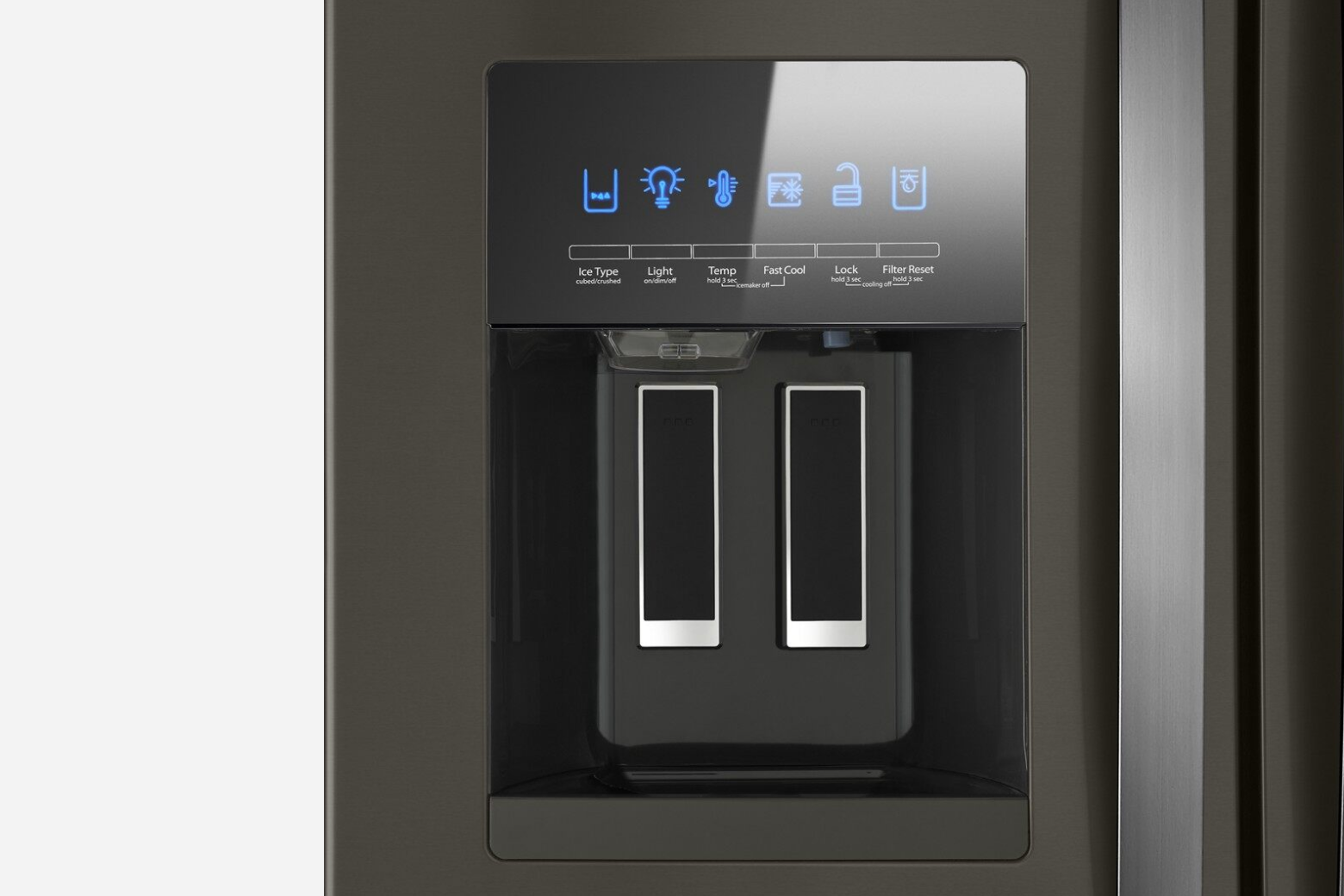

Ice maker is making ice, but is not dispensing
A dispenser refusing to release cubes into your cup can be frustrating, especially when the ice bin is visibly full. Some of the most common causes, and their potential solutions, include:
Ice clump in the bin
Cause: The auger inside the bin of your ice maker is designed to break up ice clumps that form, but an ice maker that isn’t used often may form larger chunks than the auger can take on. If you’re hearing a loud grinding sound when you try to use your ice maker, this is likely the culprit.
Solution: Small ice chunks can be removed or broken up with your hands, but larger or more solidified chunks may require removing and completely defrosting the ice bin.
Ice clump in the chute
Cause: Ice that dispenses at unusual angles can temporarily block the chute, and large chunks not properly broken up can block it entirely. Check for ice that’s lodged in the dispenser by bending over and carefully looking up into the chute.
Solution: If you see a handful of loose cubes, jiggle them free to release them. If ice in the chute seems lodged or stuck, it’s best to place a catch under the dispenser and give the ice time to melt on its own. This helps protect the chute from the potential damage of dings or breaks caused by chipping at the ice.
Frozen auger motor
Cause: Ice makers that don’t get much use may be susceptible to parts freezing over, including the auger motor located behind the freezer wall. A frozen auger may not function to move new cubes forward towards the chute, so you may be able to get a few cubes before the ice maker stops dispensing.
Solution: Defrosting the auger motor can be hard on the motor and the melting moisture may damage it, so it’s best to reach out to a professional for help getting everything running smoothly again.
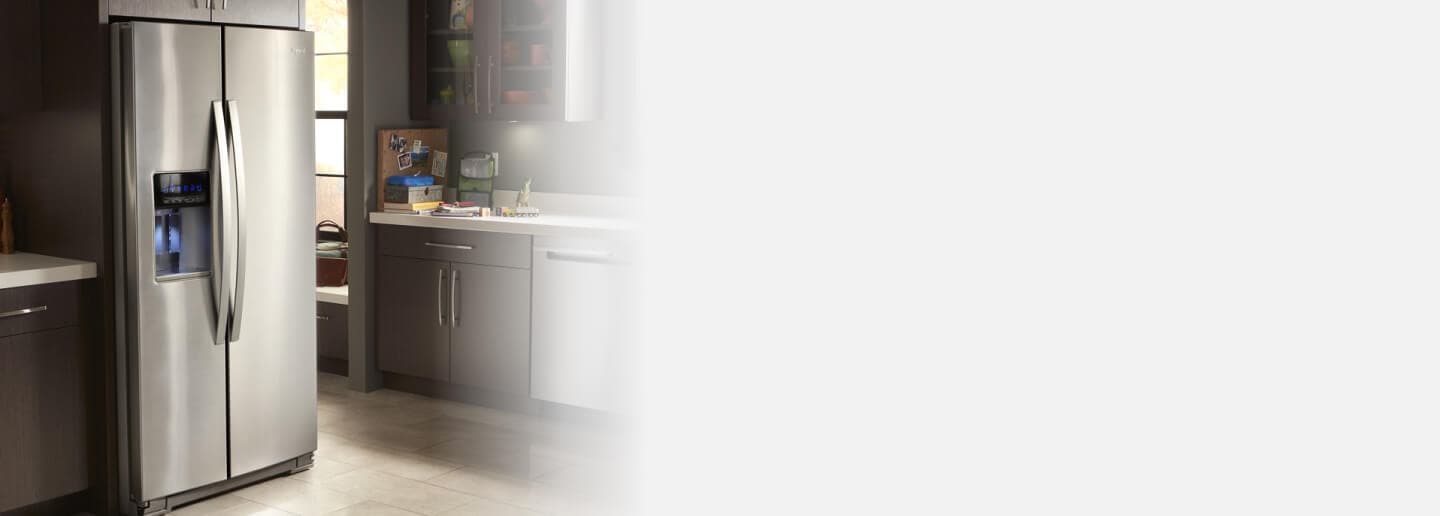
Refrigerators with ice makers
Access fresh filtered water and ice without ever opening the refrigerator door
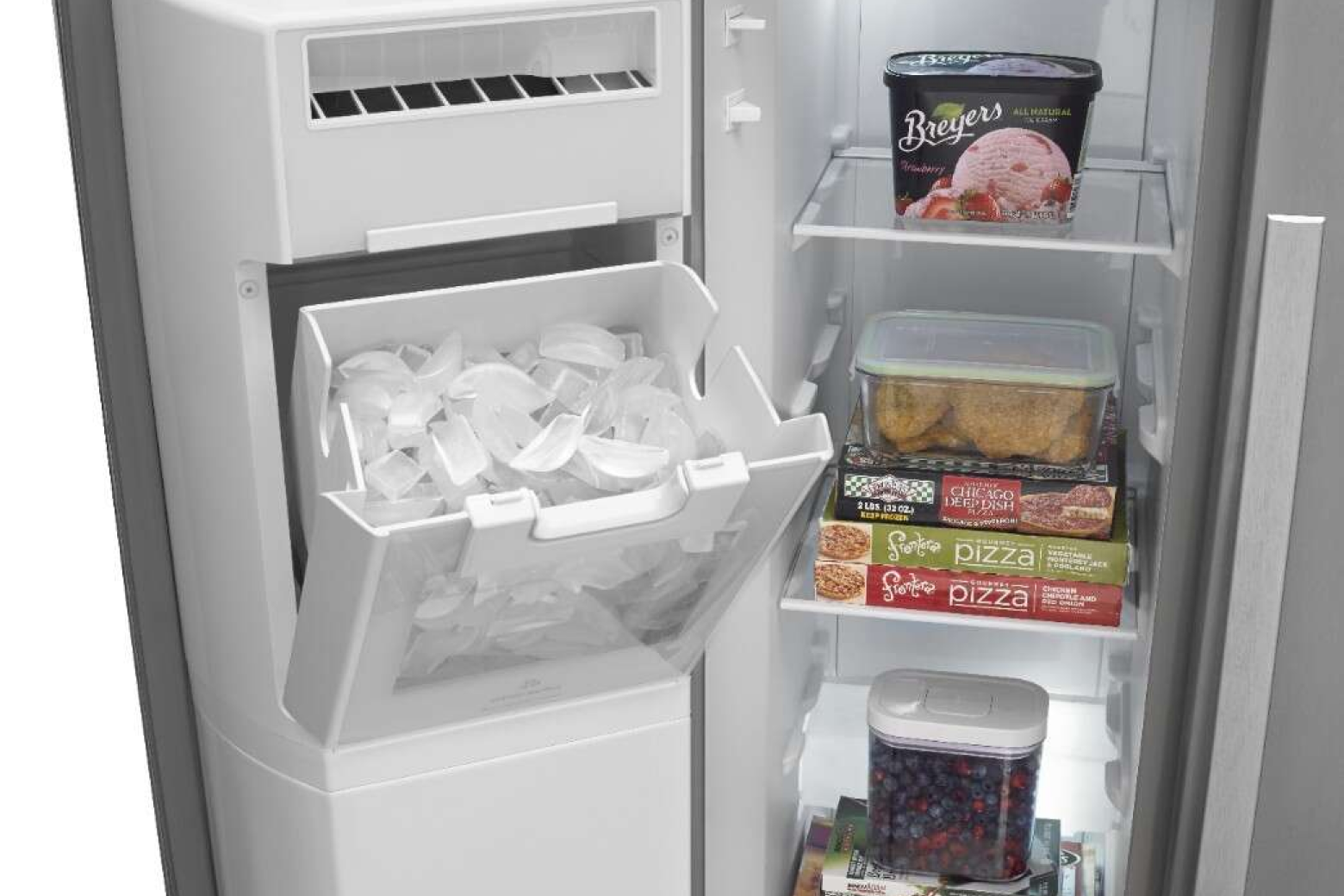

The ice maker is making too much ice
Ice maker control arms are designed to sense a full ice bin and pause ice production at the right times, so an overflowing ice bin can be a sign that something’s not right. As you narrow down the cause of too much ice production, it may be helpful to turn your ice maker on and off as needed to avoid overflow. Luckily, common causes and solutions to excess production may often be simple and include:
Ice bin isn’t positioned correctly
Cause: An ice bin not positioned correctly may cause ice to miss the bucket when it’s ejected from the mold, giving the appearance of ice overflowing.
Solution: Double check the bin’s location, making sure it’s positioned correctly to catch any ice that comes from the mold above.
Broken control arm
Cause: Your ice maker’s control arm likely looks like a large plastic or metal handle that rests on the side or top of the ice bin, and is designed to raise with or sense the ice level and shut the ice maker off once the bin is full. A broken or damaged control arm may not signal the ice maker to stop ice production, leaving you with a mess of excess cubes to clean up.
Solution: Check that the control arm is firmly attached and has no breaks or cracks. If it appears broken, contact a professional for help with a diagnosis and replacement or repair.
Missing shelf
Cause: Some refrigerator models may require a shelf designed to elevate the ice bin and aid the control arm in judging the level of ice in the bin. If your refrigerator is missing this shelf, you may experience an over-active ice maker.
Solution: Check your user manual or use and care guide to make sure all shelving is accounted for in your refrigerator, and contact your manufacturer if you’re in need of a replacement.
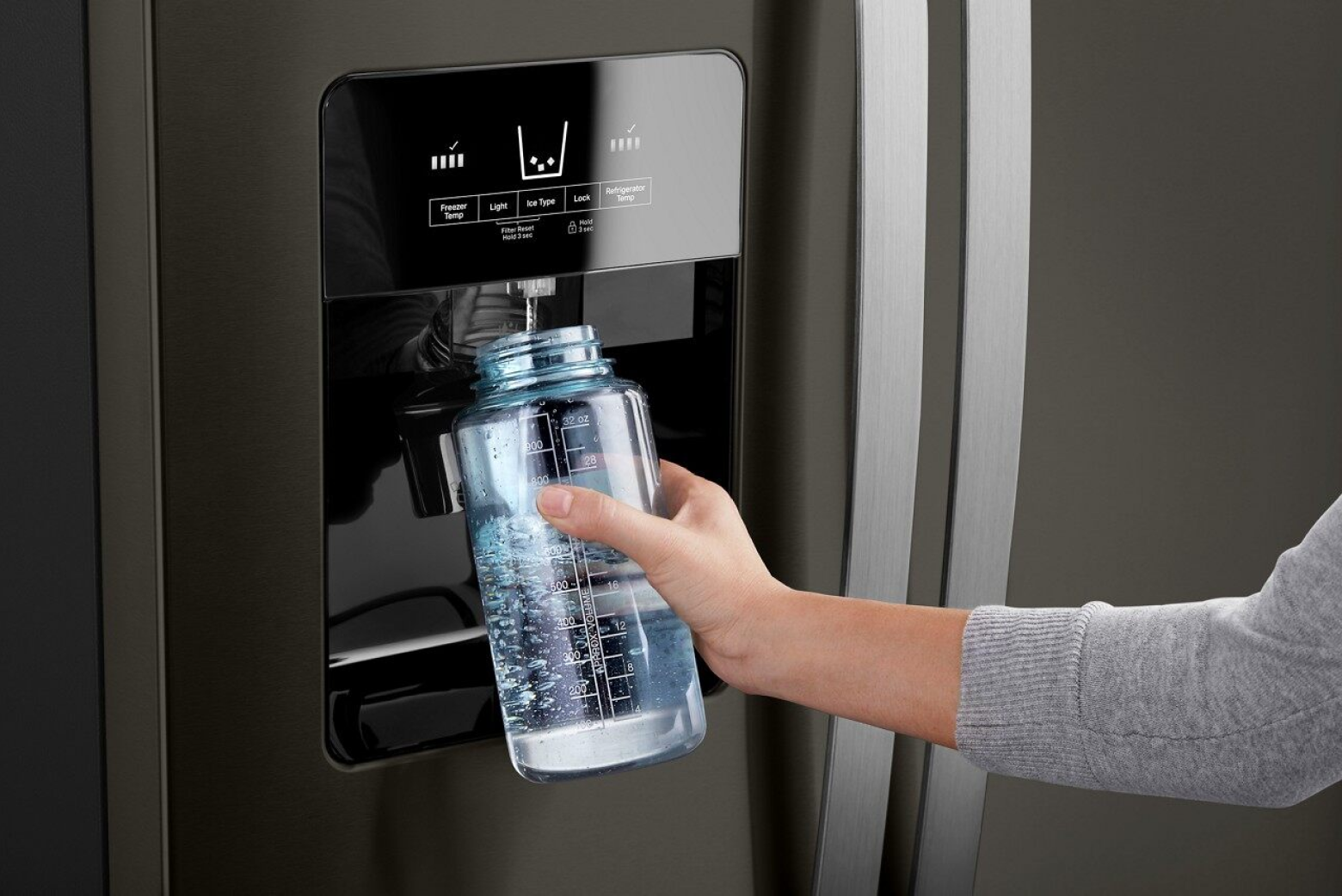

The ice has an odd taste
Strange-tasting ice in your favorite drink can be an unpleasant surprise, and may leave you wondering what’s wrong with your ice maker. If you have already cleaned your ice machine, another issue may be at the root of the problem. Some common causes, and solutions, for odd-tasting ice include:
Expired water filter
Cause: One of the most common causes for strange ice and water flavors is a worn-out water filter. The filter traps contaminants and, without proper maintenance, may become too clogged with particles to do its job effectively. Your filter is essential in helping prevent odd ice flavors from your local water supply.
Solution: Keep up a regular maintenance routine of changing your water filter every 6 months to avoid the odd taste and contaminants that accompany expired water filters.
Old ice cubes
Cause: Ice that’s been in the freezer for long can be more prone to contamination than fresh ice, and can become stale if it absorbs odors from the food in the refrigerator or freezer.
Solution: Try dumping old ice and steadily rotate ice from the ice maker if you don’t plan to use it regularly.
Poorly wrapped freezer items
Cause: Placing poorly wrapped food into the freezer, especially next to the ice bin, gives ice the chance to absorb potentially potent odors as food goes from fresh to frozen.
Solution: Use freezer-friendly supplies for packaging and wrapping frozen foods, to help ensure that frozen food maintains its quality longer and ice cubes are spared the exposure to odors.
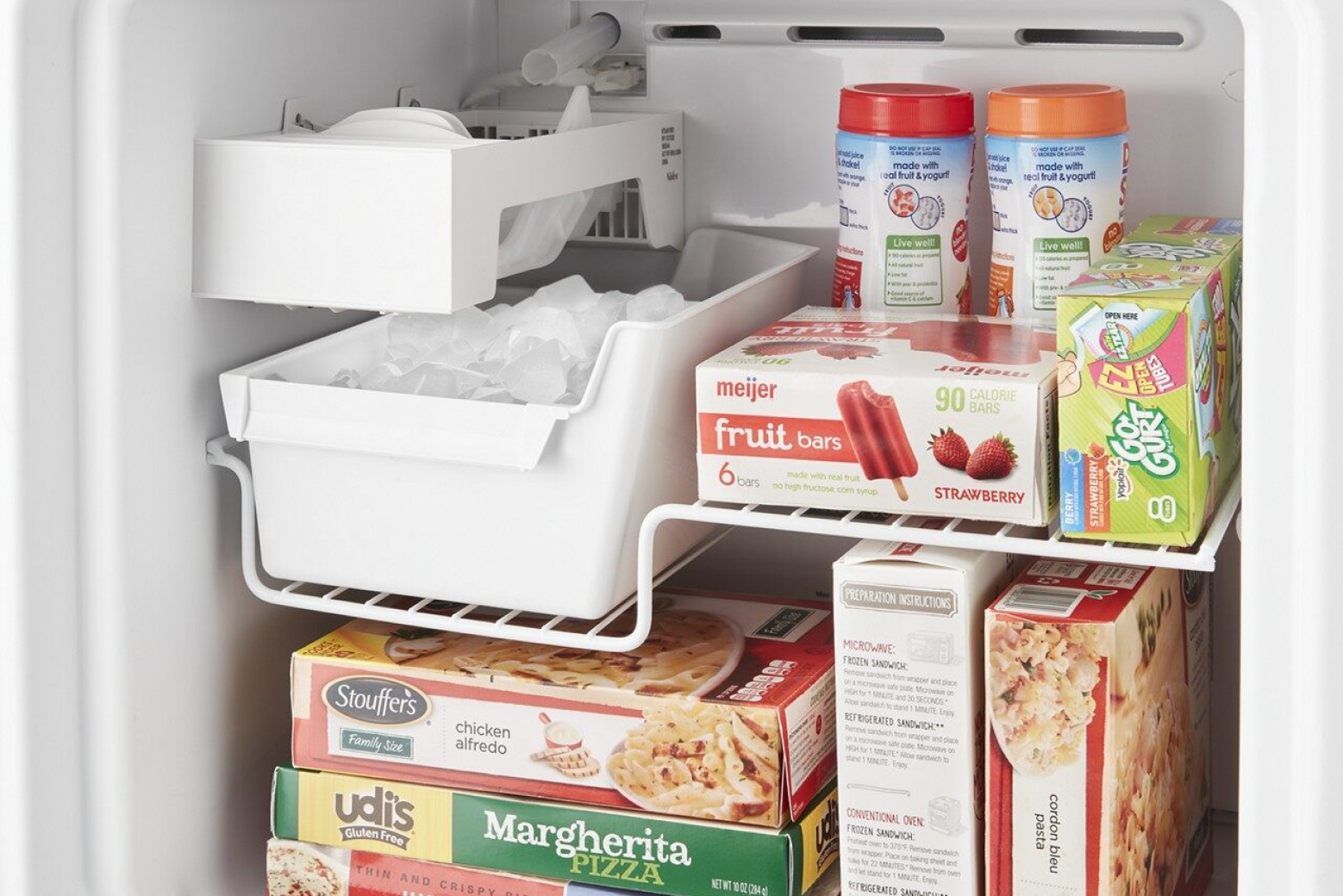

The ice maker is leaking
A leaky ice maker might drip into the ice bin and may cause ice clumps to form, or leak outside of the refrigerator or freezer and create a puddled mess on the surface below. Some of the most common causes of, and potential solutions for, a leaky refrigerator ice maker include:
Jammed ice clumps
Cause: Ice clumps can form in the ice bin or the dispenser chute for a variety of reasons, which may result in a leak when compartment temperatures fluctuate or ice in the chute comes in contact with warmer air outside of the refrigerator.
Solution: Gently break up blockages with a long plastic or wooden handle, like a spatula, for hard-to-reach places. Some ice clumps may be too large or lodged to break up without damaging the unit. In this case, remove and defrost the ice bin or, if ice is lodged in the dispenser, place a towel and dish below the chute and allow the ice to thaw naturally.
Unlevel refrigerator or ice maker
Cause: Ice in your refrigerator may melt slightly when there’s fluctuation in temperature within the compartment. An unbalanced refrigerator can prevent melted ice from accessing the drain intended to carry it away, which may result in leaky water pooling in the ice bin or traveling outside of the area.
Solution: First, use a leveler to ensure that the ice maker floor is level. If the results show any misalignment, you may need to reinstall the ice maker to ensure it’s level, or adjust the refrigerator feet if the entire unit is unlevel.
Misaligned fill valve and cup
Cause: The ice trays, or fill cup, built into your ice maker are filled by a water spigot located near the tray. If the spigot and fill cup are misaligned, water may not make it into the fill cup and will leak directly into the icemaker. This water pools and may leak out of the bin before it can freeze.
Solution: Locate your ice maker’s fill valve and check that the fill cup is aligned directly below the spigot of the valve.
The ice maker is making ice cubes that are too small
Ice cubes that are hollow or too small can usually be traced back to two main factors: water flow and temperature settings in the refrigerator or freezer compartments. Common causes and solutions for small ice cubes include:
Poor water flow
Cause: Poor water flow to the ice maker may prevent the trays from filling completely, resulting in cubes that are small, hollow or oddly shaped.
Solution: A handful of causes may contribute to poor water flow, but with each you can expect a relatively simple fix. First, make sure your water filter is up to date to help avoid clogs that reduce water flow. Next, double check that the fridge water line behind the refrigerator isn’t kinked or twisted. Lastly, use a leveler to ensure that your refrigerator and ice maker are level so water distributes evenly throughout the ice tray.
Improper temperatures
Cause: Your ice maker may not be able to keep up with its intended rate of production when the refrigerator or freezer temperatures are set too high, but temperatures too low can also lead to small or hollow cubes. Freezer temperatures below -10°F can cause ice cubes to freeze too quickly on the outside, which may trigger the thermostat in the ice maker to eject the cubes before they’ve become completely solid in the middle.
Solution: Keep your refrigerator and freezer temperatures at their optimal settings, ensuring that the freezer is set to 0°F (-18°C), and the refrigerator temperature is somewhere in the range of 33–40°F (0–4°C).
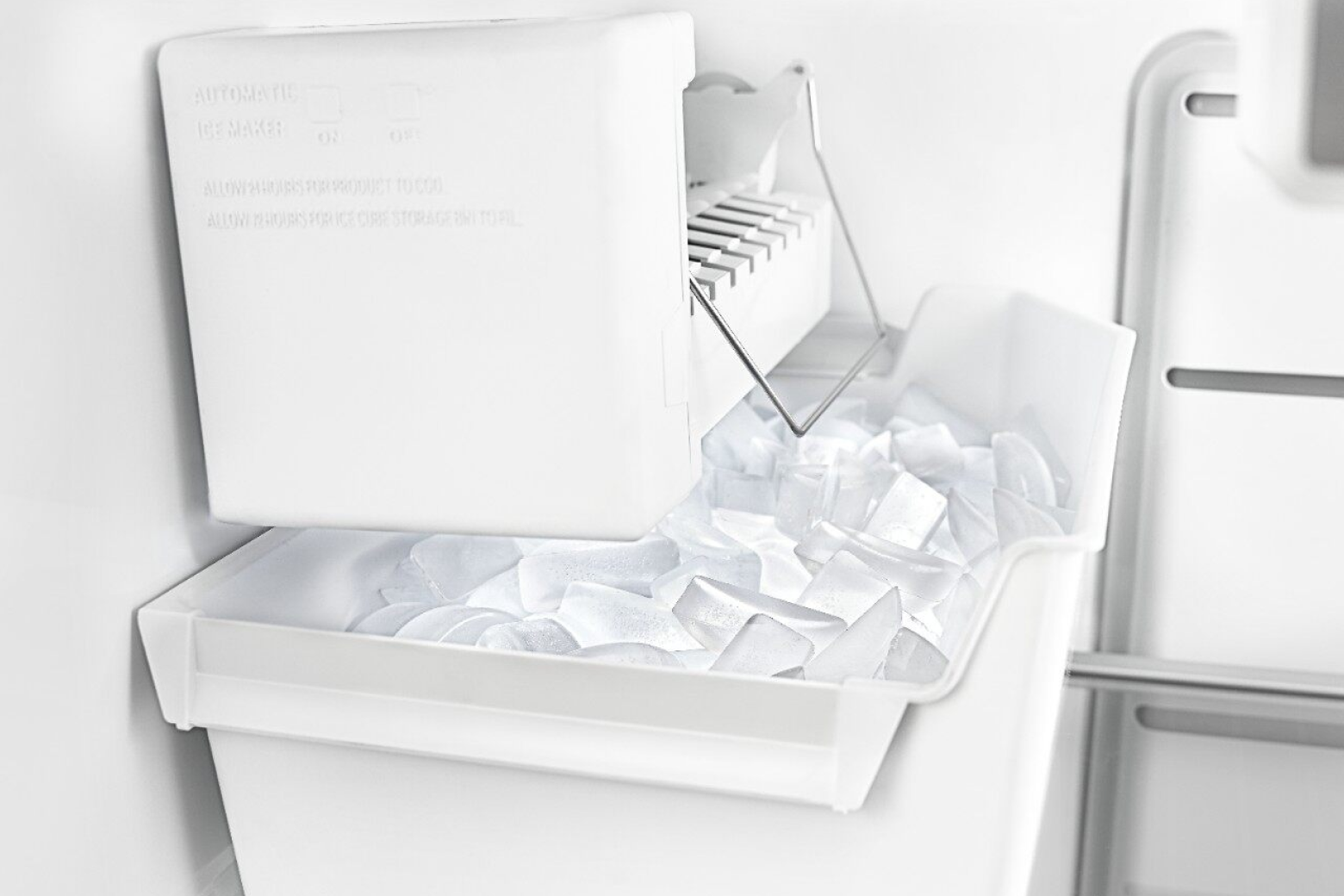

The ice maker itself is frozen
Determining the cause of a frozen ice maker can seem complicated when you have large chunks of ice blocking your line of sight. Luckily, the common causes listed below may be quick to troubleshoot and correct.
Refrigerator temperature too low
Cause: A refrigerator with freezing temperatures may cause the water inlet tube feeding your ice maker to freeze up, making it difficult for liquid to pass through and fill the ice trays. You may experience this more often during uniquely cold times of the year.
Solution: Set your refrigerator’s thermostat anywhere from 33–40°F (0–4°C), and your freezer’s thermostat to 0°F (-18°C). Give both compartments 24 hours to establish their new temperature and begin to thaw the ice maker and inlet tube.
Frozen water inlet tube
Cause: It is possible that even refrigerators or freezers set to the proper temperature can suffer from a frozen water inlet tube, shutting the ice maker down before it can even get started.
Solution: The water inlet tube is located at the rear of the ice maker and can be defrosted with warm air or water. Though you may be able to unfreeze the waterline yourself, it’s best to leave it up to a professional to help diagnose and repair the problem.
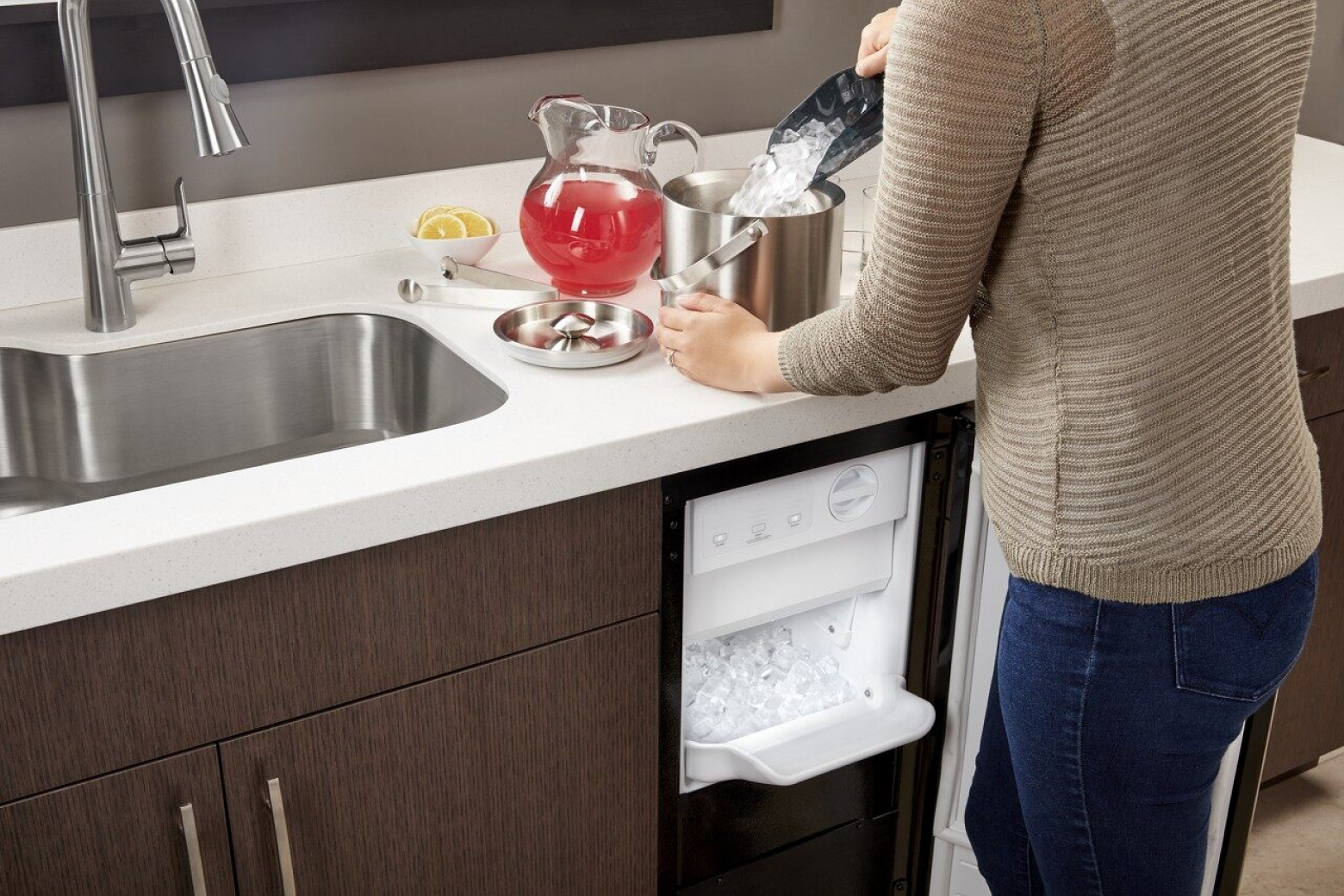

Not sure how to fix your ice maker?
If you’re still wrestling with a faulty ice maker, it may be time to call a repair service or get your manufacturer involved. For Whirlpool® Refrigerators, take advantage of online resources like Whirlpool Customer Care or schedule a repair online.
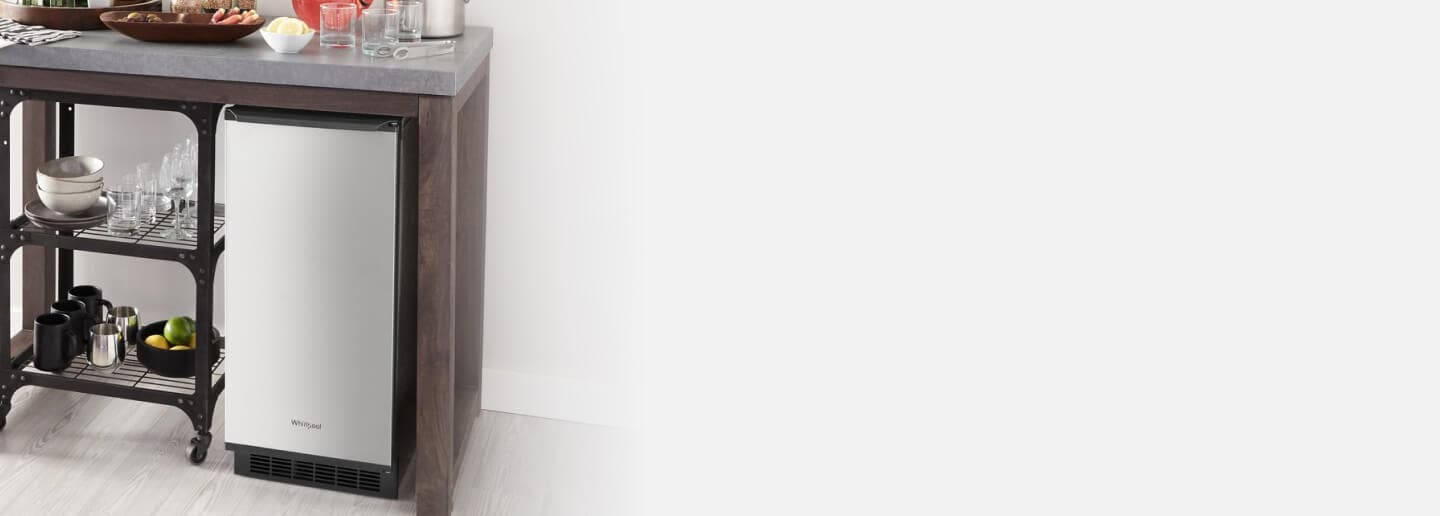
Ice Makers
Make it easy to entertain family and friends
Made to fit under your counter, Whirlpool® Ice Makers can hold 25 lbs. (11.3 kg) of cold, crisp ice
Shop for Whirlpool® Refrigerators and Ice Makers
Your greatest ice maker repair efforts may reveal that your refrigerator can no longer keep up with your family’s needs. If you’re ready for a new appliance, browse the Whirlpool® Refrigerators and Ice Makers below to find the right fit for your kitchen.
Was this article helpful? Pass it on


Helping kids stay in school
Learn how Whirlpool helps end the dropout cycle by giving kids access to clean clothes through the Care Counts™ Laundry Program
Explore more from Whirlpool brand
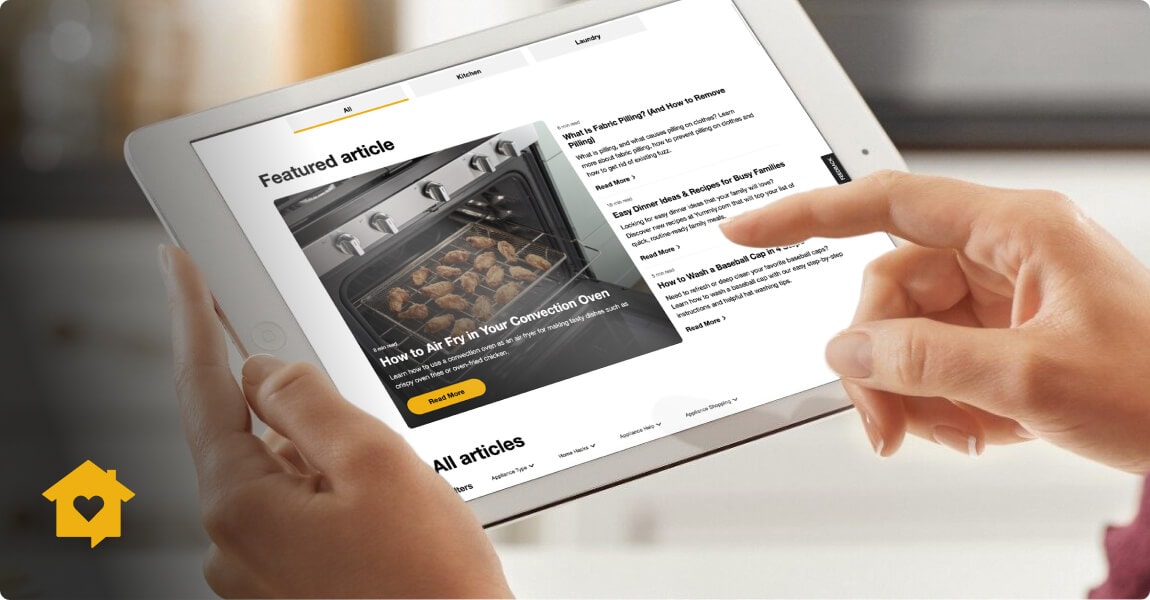

home heartbeat
Ready for more tips, home hacks and appliance guides?

